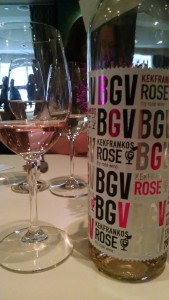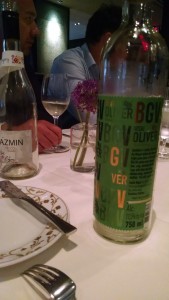 It’s easy to get lost on the shelf. Depending upon the wine shop, there are hundreds, if not thousands, of wines all eagerly vying for attention and hoping to catch the consumer’s eye.
It’s easy to get lost on the shelf. Depending upon the wine shop, there are hundreds, if not thousands, of wines all eagerly vying for attention and hoping to catch the consumer’s eye.
It’s challenging enough to stand out in the sea of Merlots or Cabs or Chardonnays. But how does a Hungarian wine make its mark, especially when – at least in one sad, but true story – it is relegated to the sake section?
Admittedly, the number of imports from Hungary is relatively small compared to those from other countries and consumer recognition is even smaller, so it can be complicated to know where to merchandise these wines. But, that shouldn’t stand in the way of getting great wines into the glasses of obliging consumers.
Although some consumers might be familiar with Hungary’s Tokaji Aszu dessert style wines, more recently, a new wave of Hungarian wines are being brought to the U.S. market. One campaign seeks to promote dry Furmint wines, the same grape responsible for Tokaji, but equally capable of producing food-friendly, crisp whites.
Another project in this regard comes from a collaboration between Hungarian producer Bognar-Vin and Monika Elling of Foundations Marketing Group (FMG). In addition to pulling from her Hungarian background, Monika has the experience and savvy to understand the U.S. wine market as well as what does and doesn’t work, and has parlayed her intelligence into this new crop of wines.
Her partner, Bognar-Vin, is among the largest family-owned wineries in Hungary, with several different brands under the corporate umbrella. They also produce cordials. After achieving success in other export markets, Bognar-Vin’s BGV brand is its first American launch.
The pair debuted the new collection in New York in May. The wines are well made, market friendly and represent a perfect combination of pleasing the palate at an appealing price point. The eye catching labels delight rather than dumb down  or insult the wine drinker, while the wines themselves are full of fresh fruit and are well balanced.
or insult the wine drinker, while the wines themselves are full of fresh fruit and are well balanced.
While I enjoyed all of the wines I tasted at the lunch, the real standouts for me were the Jazmin 2014 sparkling wine, BGV Kekfrankos Rose 2014 and the BGV Cabernet Franc 2013.
Unfortunately, word on the street is that this partnership has since dissolved. Perhaps it isn’t quite the time for Hungarian wines (or at least not these Hungarian wines). But, if these examples were anything to go by, there is certainly a place in the market for them when the time comes…
